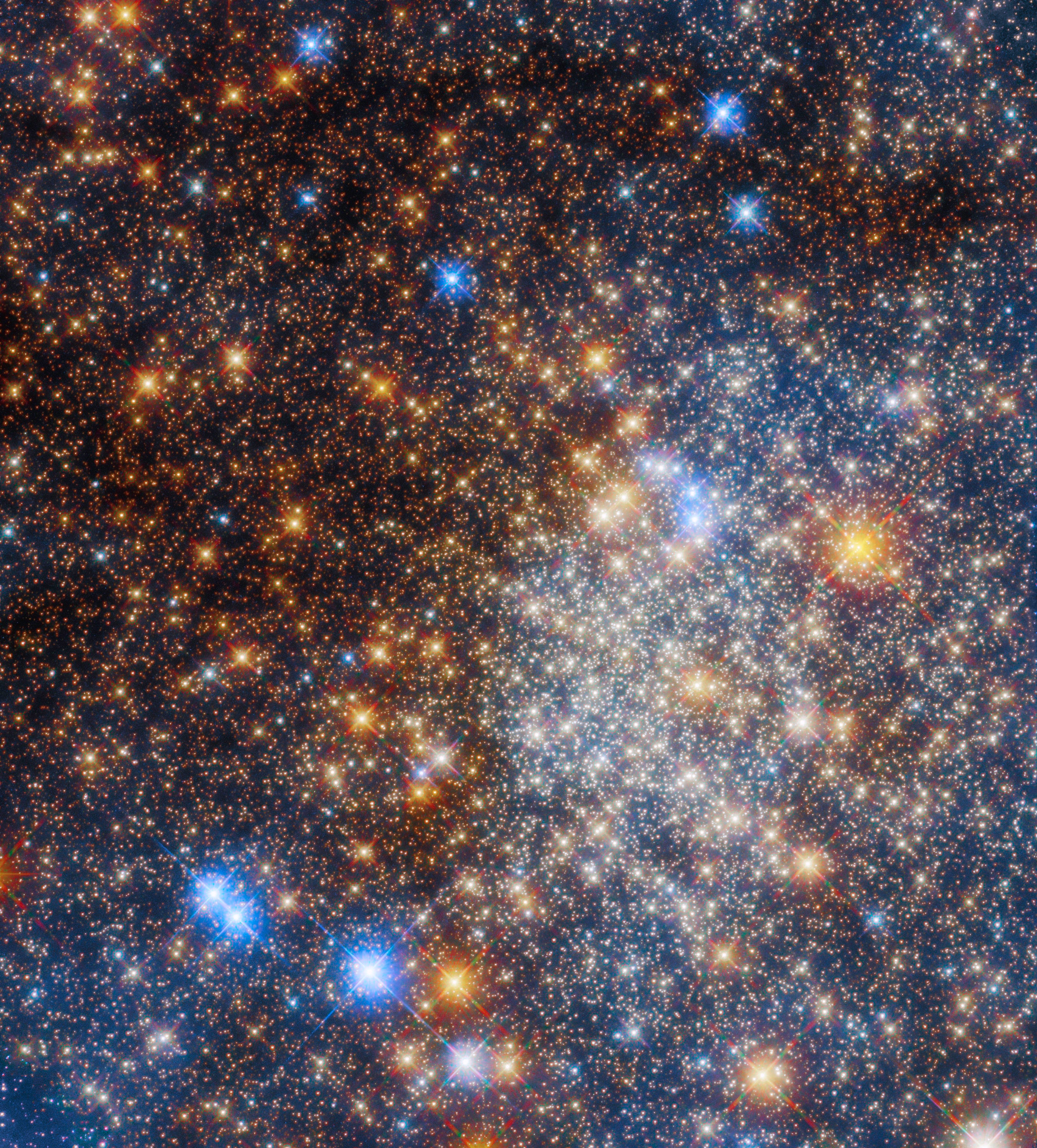
Shrouded by a blanket of dust, the globular cluster Terzan 12 shines through the deep Milky Way Galaxy in this NASA/ESA Hubble Space Telescope image.
Located in the constellation Sagittarius the Archer, the group of stars is about 15,000 light-years from Earth. The object is part of a small group of 11 globular clusters named after Turkish-Armenian astronomer Agop Terzan, who discovered them.
The picture, taken with both Hubble’s Advanced Camera for Surveys and Wide-Field Camera 3, captures hundreds of stars, resulting in a brilliant scattering of orange and blue hues. Intervening dust and gas also cause the dispersion of bluer light, resulting in an orange tint in places where that dust is thickest.
The redder stars in the photo are older giants larger than our Sun, while the blue stars are much hotter and younger. However, these young stars are not part of the cluster at all, which is exclusively made up of only the most ancient suns.
Terzan 12 is one of about 150 globulars orbiting the Milky Way. Observations of these objects could lead to breakthroughs in understanding how age affects the composition of stars within our galaxy.









